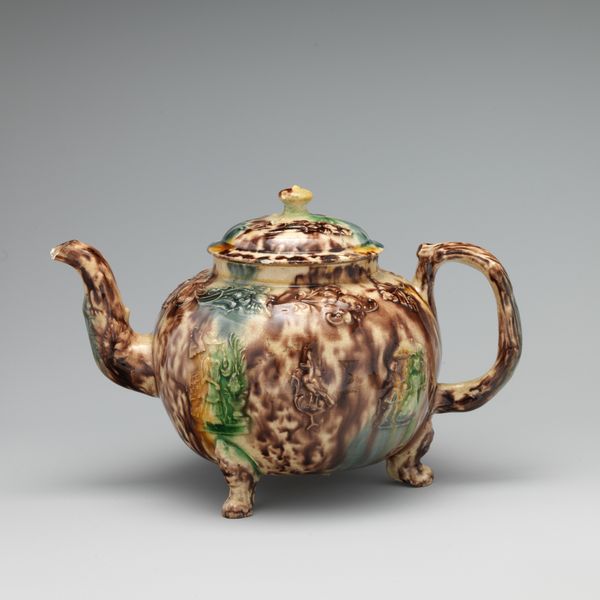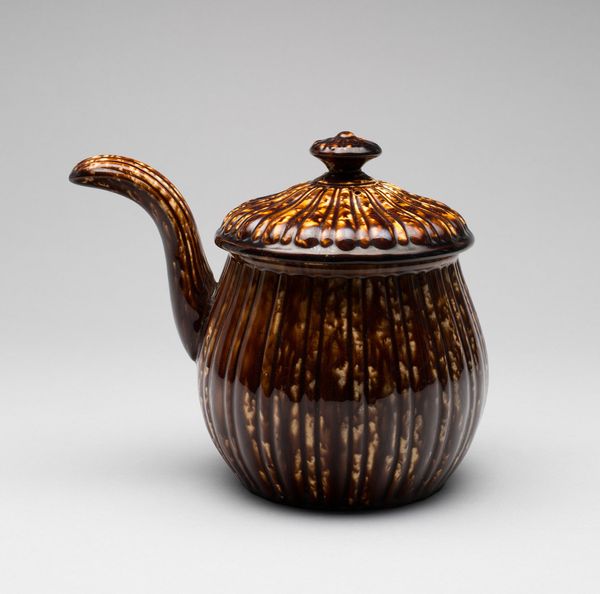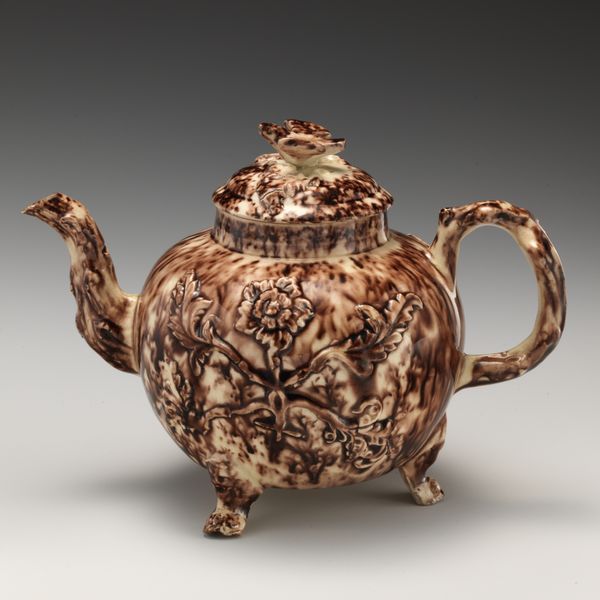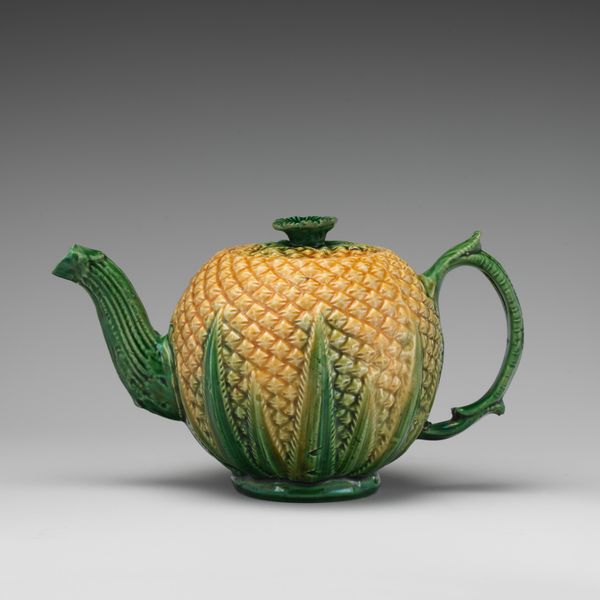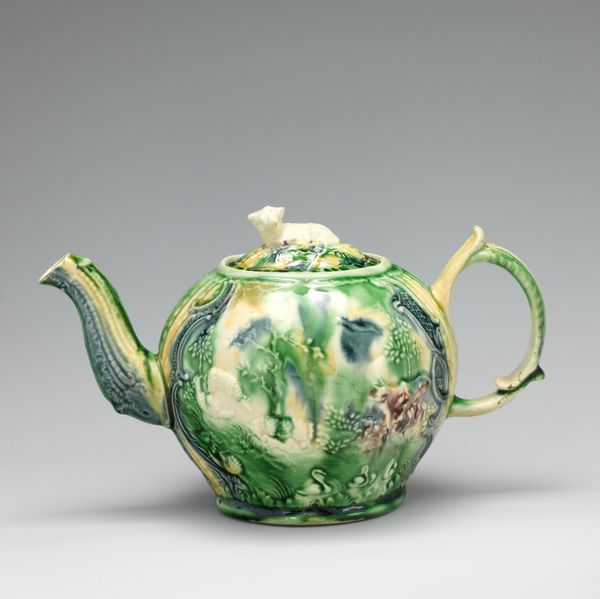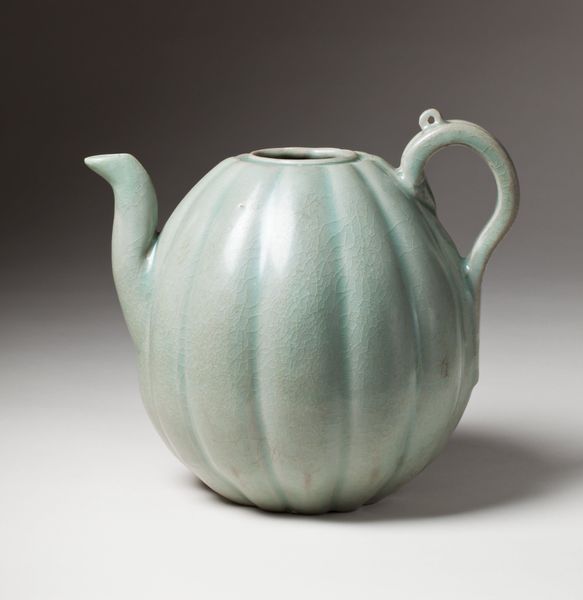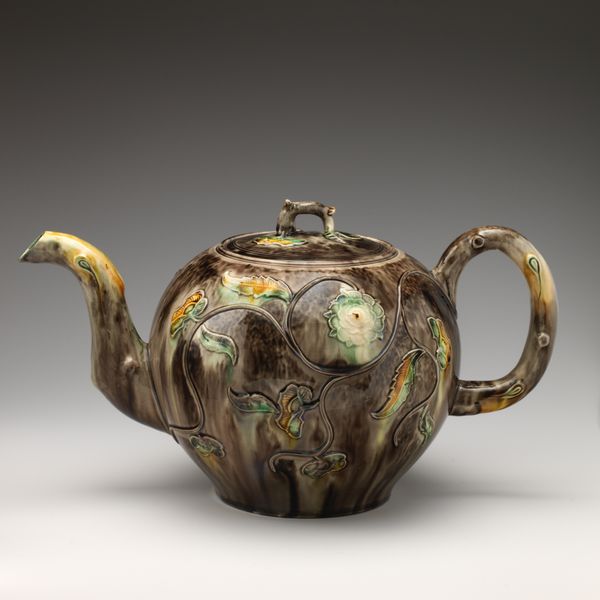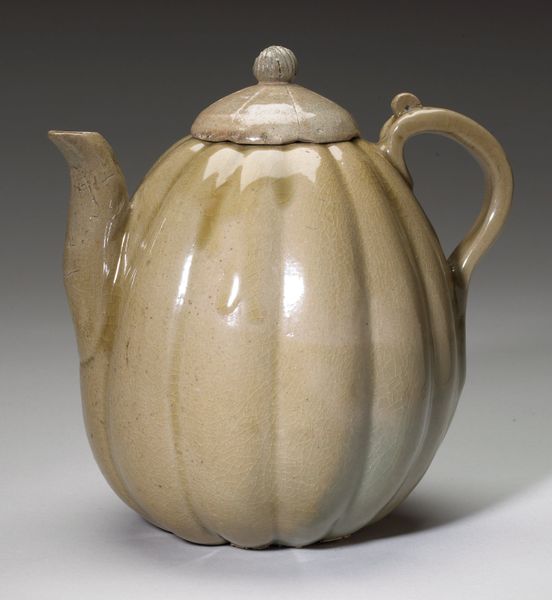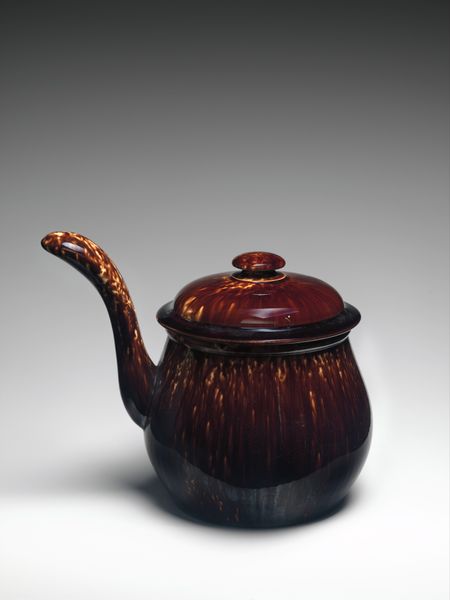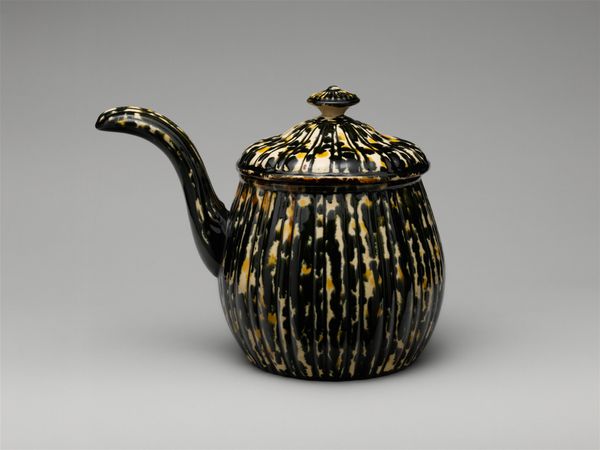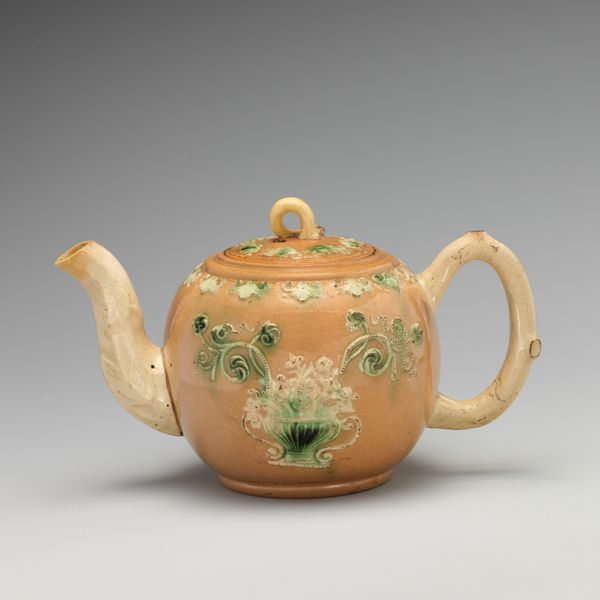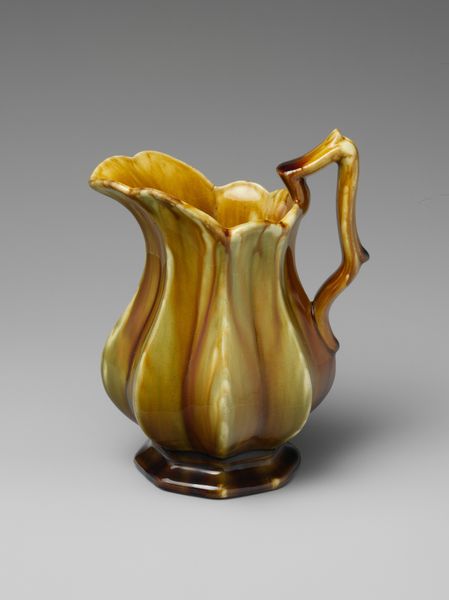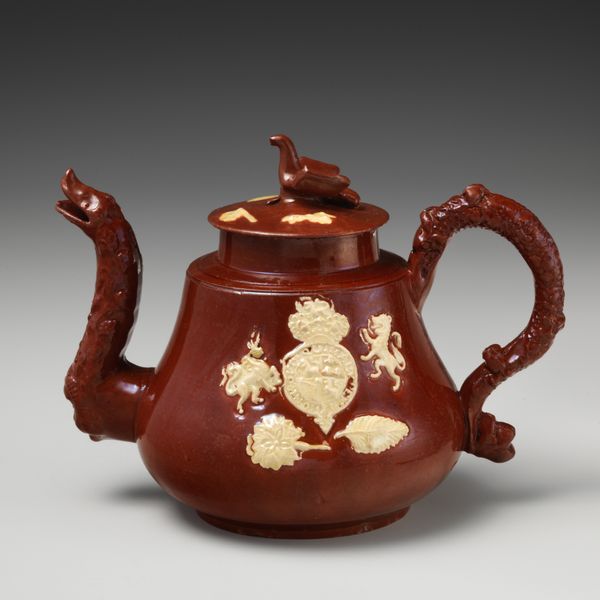
ceramic, earthenware, sculpture
#
ceramic
#
earthenware
#
sculpture
#
decorative-art
Dimensions: Height: 2 7/8 in. (7.3 cm)
Copyright: Public Domain
Editor: Here we have a Whieldon-type teapot with cover, made of earthenware, sometime between 1730 and 1765. The mottled glazing is really striking. How do you interpret this decorative object? Curator: This teapot offers a lens into 18th-century British society, revealing tensions around class and access to global commodities. Tea was transforming from an elite luxury to a more widespread, although still relatively expensive, indulgence. Do you see how the mottled glaze mimics natural materials like marble or even tortoiseshell? Editor: Yes, I see that now! It gives it an almost organic feel, despite being ceramic. Curator: Precisely. This "naturalness" speaks volumes. These faux natural glazes allowed aspiring middle classes to participate in the aesthetic of wealth and taste, subtly challenging the existing social hierarchies defined by genuine, expensive materials. This decorative mimicry reflects broader societal shifts, questioning authenticity and access. It challenges ideas around "good taste" that were carefully policed. Think of it as a quiet revolution in the tea party! Editor: That's fascinating. It's more than just a teapot; it's a commentary on society. Do you think its creation encouraged dialogue? Curator: It undoubtedly spurred conversation, albeit within a limited circle. Ownership of such items allowed individuals to signal their aspirations, inviting comment and perhaps even subtle social competition within their communities. Were they "keeping up with the Joneses," so to speak, by displaying these carefully crafted yet ultimately imitative wares? The conversation shifts from utility to signaling social ambition. Editor: Wow, I never considered a teapot could hold so much meaning! This makes me appreciate the complexities embedded in even the most seemingly simple, domestic objects. Curator: Exactly! Everyday objects offer valuable insights into historical social dynamics, particularly when we examine their accessibility and the stories they silently tell.
Comments
No comments
Be the first to comment and join the conversation on the ultimate creative platform.
